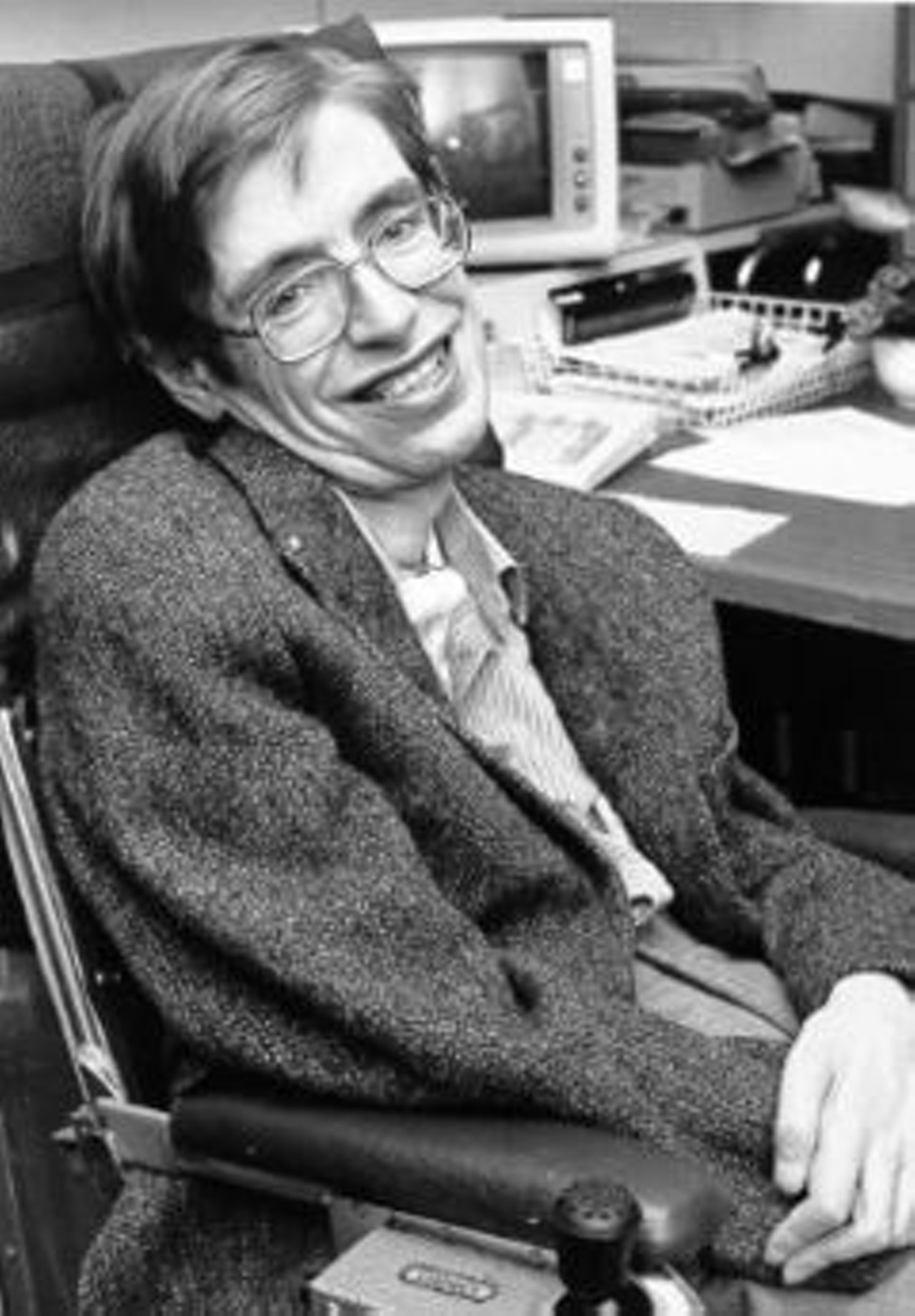“We are just an advanced breed of monkeys on a minor planet of a very average star. But we can understand the Universe. That makes us something very special.” ~ Stephen Hawking
Stephen William Hawking was an English theoretical physicist, cosmologist, author, and Director of Research at the Centre for Theoretical Cosmology within the University of Cambridge. His scientific works included a collaboration with Roger Penrose on gravitational singularity theorems in the framework of general relativity and the theoretical prediction that black holes emit radiation, often called Hawking radiation. Hawking had a rare early-onset slow-progressing form of motor neurone disease that gradually paralyzed him over the decades. He passed away on 14th March 2018, at the age of 76. This article hopes to be a tribute to the man who stood on the shoulders of giants and authored a brief history of time
Personal Life:
Hawking began his undergraduate education at University College, Oxford at the age of 17. For his first 18 months at Oxford, he found the academic work “ridiculously easy”. However, according to his physics tutor Robert Berman, a change occurred during his second and third year as Hawking developed into a popular, lively and witty college member. After receiving a first-class BA(Hons.) degree in natural science, he began his graduate work at Trinity Hall, Cambridge in 1962.
The diagnosis of motor neurone disease came when Hawking was 21, in 1963. After the diagnosis, Hawking fell into depression. Although doctors advised him to continue with his studies, he felt there was little point. Although Hawking had difficulty walking unsupported, and his speech was almost unintelligible, an initial diagnosis that he had only two years to live proved unfounded. With Dennis Sciama’s encouragement, he returned to his work.
When Hawking began his graduate studies, there was much debate in the physics community about the prevailing theories of the creation of the universe: the Big Bang and Steady State theories. Inspired by Roger Penrose’s theorem of a spacetime singularity in the centre of black holes, Hawking applied the same thinking to the entire universe and in 1965, he wrote his thesis on the topic. In March 1966, he obtained his PhD degree in applied mathematics and theoretical physics, specialising in general relativity and cosmology and his essay “Singularities and the Geometry of Space-Time” shared top honours with one by Penrose to win that year’s prestigious Adams Prize.
In the late 1960s, Hawking’s physical abilities declined: he began to use crutches and ceased lecturing regularly. As he slowly lost the ability to write, he developed compensatory visual methods, including seeing equations in terms of geometry. However, Hawking was fiercely independent and unwilling to accept help or make concessions for his disabilities. Near the end of his life, he was experiencing increased breathing difficulties, requiring a ventilator at times, and was hospitalised several times.
In 1974, Hawking’s research turned him into a celebrity within the scientific world when he showed that black holes aren’t the information vacuums that scientists had thought they were. In simple terms, Hawking demonstrated that matter, in the form of radiation, can escape the gravitational force of a collapsed star.
From the singularity theories he published with Roger Penrose in 1970, through to his landmark 1974 proposal that black holes emit radiation, and his later 1982 thesis that quantum fluctuations could cause galaxies to spread in the universe, Hawking’s research theories toppled the world of theoretical physics.
When Hawking’s radiation theory was born, the announcement sent shock waves of excitement through the scientific world. In August 2015, Hawking appeared at a conference in Sweden to discuss new theories about black holes and the vexing “Information Paradox.” Addressing the issue of what becomes of an object that enters a black hole, Hawking proposed that information about the physical state of the object is stored in a 2-dimensional form within an outer boundary known as the Event Horizon. Noting that black holes “are not the eternal prisons they were once thought,” he left open the possibility that the information could be released into another universe.
were once thought,” he left open the possibility that the information could be released into another universe.
Hawking passed away at his home in Cambridge, England early in the morning of 14th March 2018. He was eulogised by figures in science, entertainment, politics, and other areas. Hawking directed at least fifteen years before his death that the Bekenstein–Hawking entropy equation be his epitaph.
“One, remember to look up at the stars and not down at your feet. Two, never give up work. Work gives you meaning and purpose and life is empty without it. Three, if you are lucky enough to find love, remember it is there and don’t throw it away.”
–Article by Barney Stinson, James Potter

